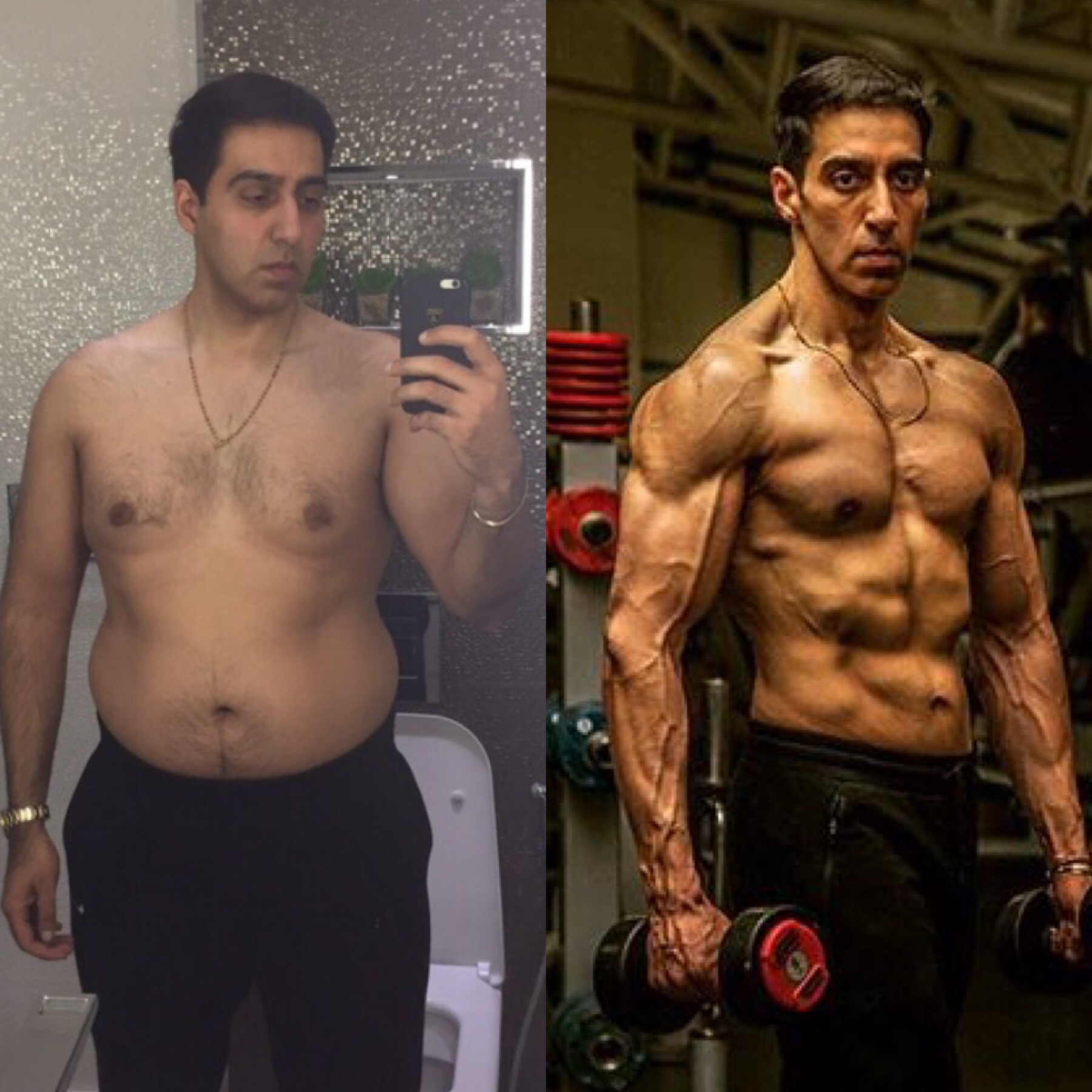Recover HARDER!!!
What does that mean?
You will have been told you need to train harder, you need to do more, because more is always better…
You may even be at the point where you have been training consistently and you are starting to see a slower rate or progress in terms of increased lean muscle mass and reduced body fat.
So, what is the next step?
Do you drop calories even further?
Do you add in more cardio at the expense of sleep in the morning?
Is it time to increase the intensity and fire on all cylinders with high frequency, high volume training?
You have probably tried all this right?
Well here is where step three of increasing lean muscle gets extremely interesting. Read a summary of this article in the next three bullet points:
- 1.The number one recovery strategy is sleep! Optimise and track sleep for improved muscle mass and reduced body fat!
- 2.Adapt your training style, rest days and discover your lower limit to get the greatest improvements in lean mass!
- 3.There are monitors you can utilise to assess your quality of recovery, they are cheap and simple to use!
The Recovery Blueprint
In modern times, you deal with more stress than ever before. To understand the optimal recovery blueprint, you must first decipher the paradox that is stress!
Defining stress.
The stress hormone, cortisol, is often demonised, but acutely is essential for maintaining equilibrium within the body. ‘Good’ stress enables us to achieve optimal alertness, improves cognitive performance and reduce inflammation caused by an injury.
Chronic stress on the other hand is a form of low grade stress that exists in response to the daily emotional, physical and physiological demands placed on our body. For example, your work load, the job you dislike, the manager you don’t get on with, the excessive caffeine you use to stimulate your long working week, the lack of sleep you get because you chose to watch a Netflix series instead of sleeping, the 6 sessions a week of high intensity intervals you do to stay in shape and the poor relationship with food intake will all contribute to chronic stress.
Chronic stress is associated with insulin insensitivity, elevated blood sugar levels, digestive distress and disrupting assimilation of key nutrients for growth and repair. Unbeknownst to you, common day to day stressors over a long period of time can lead to dysfunctional responses to stress which presents itself in a variety of symptoms.
Recognising the symptoms of stress:
- Weight gain
- Continual colds and flu
- Digestive distress
- Lower libido
- Poor sleep
- Anxiety or depression
- Caffeine dependency
- Bad moods and agitation
This is my online client Opinder, when we started his body was highly inflamed and he struggled to achieve day to day tasks without joint pain. His digestive health was impaired, and he really struggled to put on any lean muscle tissue whilst dropping body fat. He used the recovery blueprint alongside a structured nutrition and training plan to achieve incredible results!

The Recovery Blueprint- Actionable Steps
The best way to manage stress is recognising it! Once you know what symptoms to look out for, you can take action or redirect your energy to a positive result. Rather than constantly trying to put out fires, for example icing your knees because they are constantly sore, or taking gaviscon every time you get heart burn, look at the root cause of these issues, they usually lead back to your lifestyle, nutrition and training habits.
You cannot tackle every aspect of poor lifestyle habits all at once! So do start with the number one lifestyle habit you need to improve to get the most from training:
Sleep!
Barely sleeping and working like a trooper is often met with great admiration from your work colleagues. Whilst in the short term, you may get away with this with little to no symptoms. Long term sleep deprivation effects your response to exercise, food intake and stress! Here is an example of some of the hormones effected by poor sleep:
- Ghrelin increases hunger and is elevated after poor sleep which can lead to over eating and excessive hunger.
- Leptin reduces appetite and is decreased after poor sleep which can again leads to over eating!
- Cortisol increases after poor sleep which can cause consistent elevations of blood sugar and reduced insulin sensitivity which can lead to higher body fat levels especially if you are overeating!
- Growth hormone is reduced after poor sleep, this can lead to lower levels of muscle protein synthesis through reduced uptake of amino acids in muscle.
So what can you do to optimise your sleep to improve your lean muscle mass?
Here are my top 5 go to tips for a better sleep!
- Have your carbs before bed! Carbs taste great… you knew that… but they also increase serotonin which can aid in your relaxation and getting a deeper sleep!
- Block blue light! Blue light can reduce the hormone melatonin which aids in improving sleep quality and decreasing cortisol at night. Indirectly this may improve blood sugar control!
- Do your best to avoid stress in the evening! This includes having tough conversations before bed, paying bills at night and stimulating your mind with T.V. thrillers!
- Ensure you control your sleeping environment. A cooler room at night will help you get a deeper sleep and increase melatonin release.
- My personal favourite is to find a restful meditation to follow before going bed, which promotes deep breathing and allows you to relax into a deeper, more restful sleep. I use the Headspace app before bed for guided meditation (click here for the link)
Train SMART
Training 6-7 times a week and smashing high intensity intervals on a treadmill, box jumping, pushing sleds around and throwing medicine balls with all of your might, is not going to give you the increased lean muscle mass you crave, unless you are recovering optimally!
It is also likely to be way more than you need to do, to achieve the results you are looking for. The lean muscle blueprint allows you to negate the excessive and potentially damaging sessions and work just as much as you need to see the best results!
When deciding on how many training sessions you should perform each week, the quantity of sets in each session, the amount of heavier lifts per session and the style of training you should perform, always take into account the number of stressors you currently have in your life. Here are a few to look out for:
- How well do you sleep currently?
- Are you suffering from existing issues around inflammation?
- Are you recovering from an illness or injury?
- Is this your main priority outside the gym or is this pulling you away from time spent with your family?
- How many hours are you working per week?
- Do you enjoy your job or are your stressed as hell?
- Are finances stressing you out?
- Is your relationship causing you stress?
Once you have taken into account the number of stressors in your life, you can decide on a plan that will enable you to train and see results! Finding the minimum effective dose to induce a positive effect in lean muscle mass is your key to success!
How do you find the minimum effective dose?
There are two approaches to finding your minimum effective dose for training. The scientific approach or the gut check. I will discuss the scientific approach in the next chapter, for now lets focus on the way you feel and the results you see using the gut check method.
The gut check questions:
Are you seeing progress? >if you aren’t measuring your progress, make sure you do! Check out this article on how to assess your progress effectively.<
- Are you feeling energetic?
- Do you constantly suffer from delayed onset muscle soreness?
- Are you repeatedly getting injured?
- Do you keep falling ill or seem to constantly have a low level flu/ cold?
- Are you waking up feeling tired every morning?
- Do you have a good libido?
If you are reading these questions and thinking, damn, I am definitely over doing it, don’t worry! We can very easily make positive changes, apply these 5 changes to your routine:
- Take more rest days, unless you have nothing else going on in your life but training and recovery, you need to limit the frequency of your training,
- Choose active recovery on days you feel low on energy, high on stress or fatigued from poor sleep.
- Don’t cut carbs entirely on rest days where possible, feed your recovery by replenishing glycogen stores in preparation for training days.
- Ensure you are training with the right approach (Click Here for the Training Blueprint).
- Walk more on rest days. The simplest form of physical activity provides so many benefits when it comes to clearing waste products caused by lifting, improving posture and reduce stress!
The Scientific Approach to Recovery
Track your Heart Rate Variability (HRV) using a heart rate monitor (Polar H10 Click Here for the link) and a very cool app (HRV Elite Click Here for the link)! HRV tracks the variability between your heart rate which gives you an indication to the level of stress your body is currently under.
Your heart rate is governed by your bodies autonomic nervous system. This is the part of the nervous system that regulates breathing, blood pressure and heart rate without you consciously thinking about it.
There are two main divisions to the autonomic nervous system, the parasympathetic and the sympathetic pathways. You can think of the parasympathetic division as the rest and digest pathway and the sympathetic division as the fight or flight response.
The sympathetic pathway will prepare the body for emergencies or stressful situations, elevating your heart rate, releasing stored energy to be used immediately and increasing blood pressure through increasing the force of heart rate contractions.
The parasympathetic pathway is the reverse of this, with lower blood pressure and reduced heart rates recorded. This state leads to increased stimulation of the digestive tract.
So why does this matter and how does it relate to increasing lean muscle mass?
If you are consistently in a state of fight or flight, your physical performance, ability to digest and assimilate foods and recovery from training will suffer! You will not be in an optimum state to improve performance in the gym (essential for muscle development) or be in a good place to digest the increased food intake required to build muscle tissue (get the nutrition blueprint here).
What is optimal?
You should aim to be in a parasympathetic state for the majority of the day and night. Higher heart rate variability is linked to lower levels of stress, better health, improved performance and enhanced recovery.
How can you remain in an optimal state?
This is where you need to be highly in tune with what your body needs and in all honesty, directed by an elite level coach that takes the time to understand your individual requirements!
For further information on my online coaching packages please visit www.juggysidhu.com/online-training


